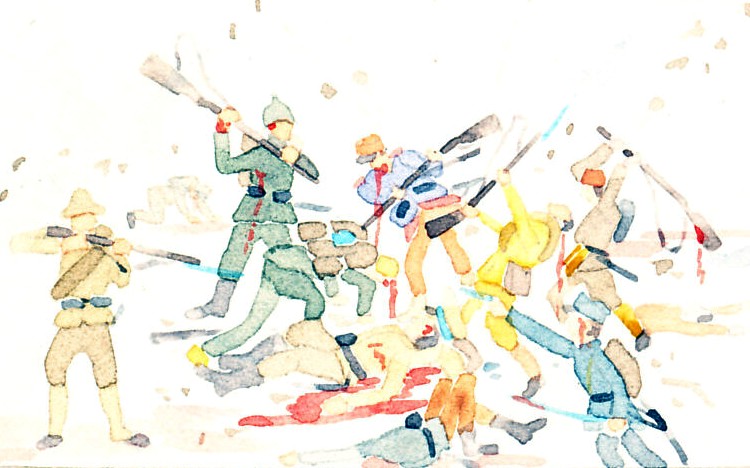In July 1915, British and German forces fought three engagements in Hooge, a village near Ypres with a destroyed chateau held by the Germans, and its stables held by the British. A British mine on July 19 opened a crater 120 feet across. On July 30, the Germans attacked with flamethrowers, the first time the British had faced the weapon. Map from Military Operations France and Belgium, 1915, Vol. II, by Brigadier-General J.E. Edmonds and Captain G.C. Wynne. Map by Major A.F. Becke R.A. (Retired) Hon. M.A.

Sketch 14
Hooge, 30th and 31st July 1915.
The Liquid-Fire Attack
Legend:
German Front Line before the Attack
German Front Line at the close of the Action
British trenches, captured or evacuated
British Front Line at the close of the Action
British trenches
Unoccupied crater
Other views:
Front
